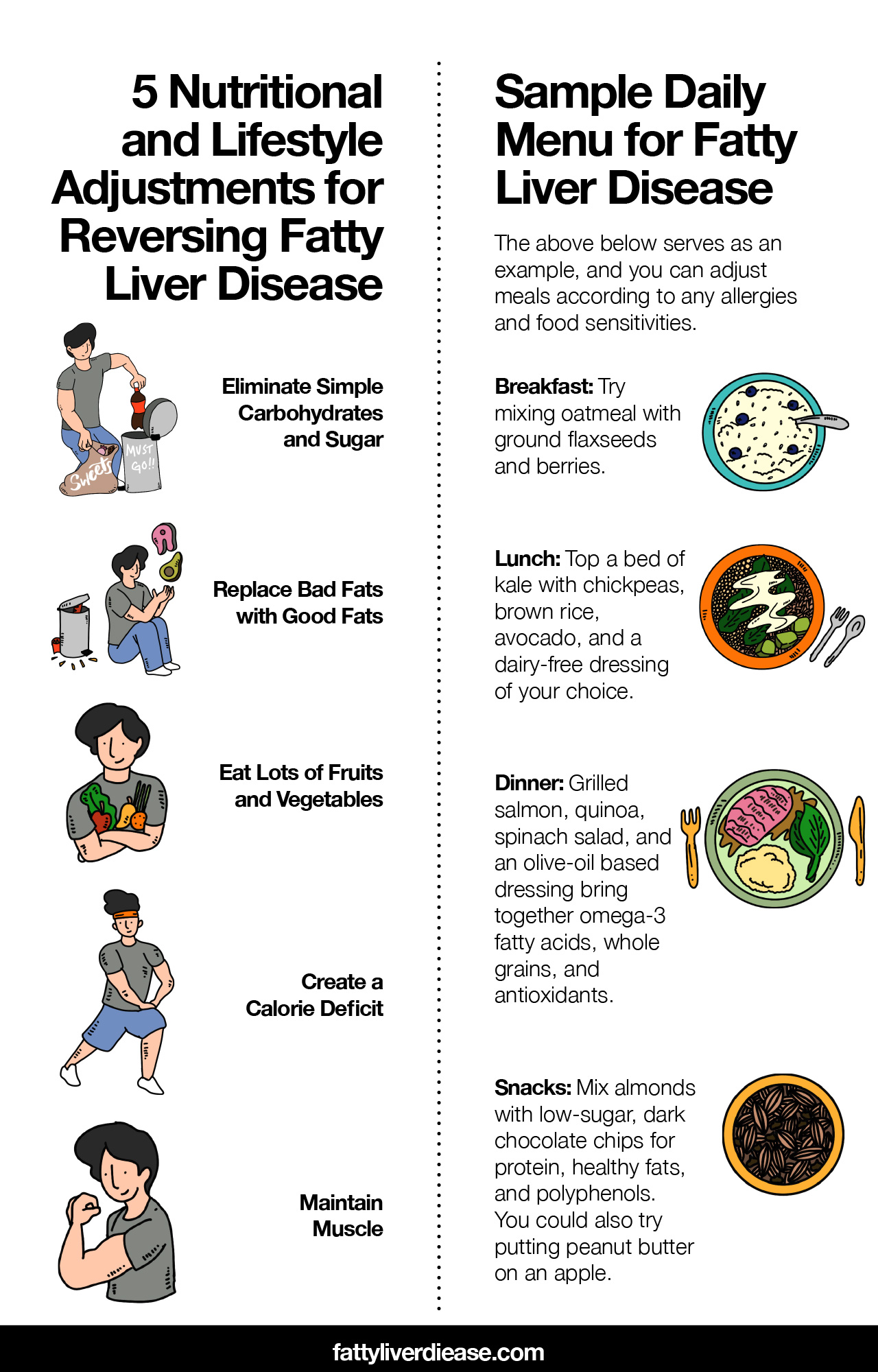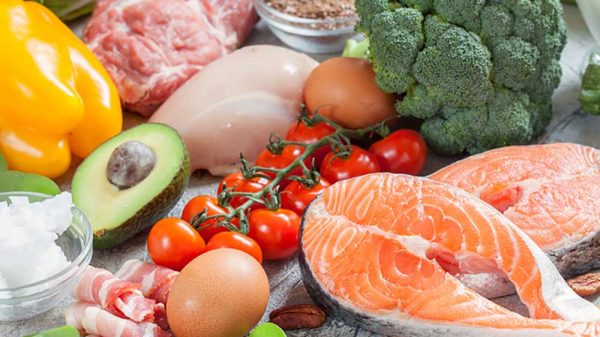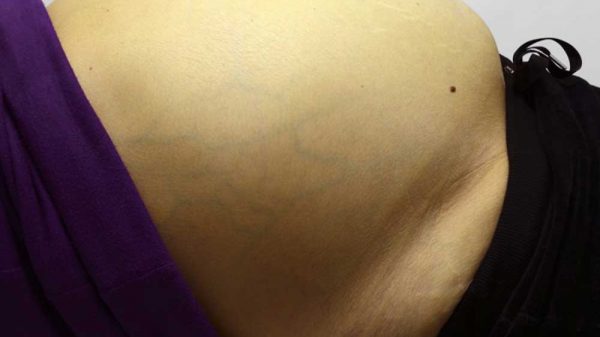Fatty liver disease – also known as hepatic steatosis – is a very common condition affecting approximately a quarter of the population worldwide. (1) Fatty liver disease is characterized by fat accumulation in the liver. Though in early stages it rarely causes any complications, fatty liver disease can be a precursor to more severe liver diseases.
Luckily, a fatty liver disease diet plan can reverse fat accumulation, prevent complications, and encourage healthy liver function.
Alcoholic vs. Nonalcoholic Fatty Liver Disease
There are two types of fatty liver disease: alcoholic fatty liver disease (ALFD) or nonalcoholic fatty liver disease (NAFLD). As the names suggest, AFLD is linked to heavy alcohol consumption, while NAFLD is associated mainly with diet and lifestyle combined with a genetic predisposition.
The fatty liver home remedies discussed in this article are beneficial for both forms of fatty liver disease. However, if your case of fatty liver disease is a result of chronic alcohol abuse, cutting out alcohol will be a key component of recovery and prevention of liver cirrhosis. Alcoholic fatty liver disease will only be responsive to diet changes if the root cause of fat accumulation is eliminated. Learn more about natural remedies to help you detox from alcohol at home and support liver repair after alcohol-induced damage.
Additionally, if your form of fatty liver disease is diet-based, it’s still a good idea to limit alcohol consumption to keep inflammation low and reduce the risk of inflicting alcohol-induced liver damage.
Nonalcoholic Fatty Liver Disease: Symptoms and Risk Factors
NAFLD is characterized by excess liver fat in the form of triglycerides, cholesterol, or free fatty acids like saturated fats. Hepatic fat accumulation can cause liver inflammation and oxidative stress, which if left untreated, can lead to more complicated liver conditions. (1)
Making dietary and lifestyle adjustments now is necessary to prevent the following possible complications:
- Nonalcoholic steatohepatitis (NASH): an inflammatory condition than impacts liver function
- Liver fibrosis: scarring of the liver that leads to liver cirrhosis
- Liver cancer: proliferation of harmful cancer cells that impede healthy liver function
- Liver failure: the most advanced case of liver damage in which liver function shuts down
Though NAFLD may cause lethargy and tenderness in the upper right quadrant of your abdomen, you may also have NAFLD and not even know it. Most of the time, NAFLD has no symptoms and is only detected when a blood test reveals high liver enzymes. Diagnosis can be confirmed using ultrasound or liver biopsy. (2)
A diagnosis of nonalcoholic fatty liver disease is associated with the following conditions:
- Metabolic syndrome (including high cholesterol, hyperglycemia, and high blood pressure)
- Insulin resistance
- Type 2 diabetes
- Obesity (3)
The good news is that treating the risk factors simultaneously treats fatty liver disease and helps prevent progression.
5 Nutritional and Lifestyle Adjustments for Reversing Fatty Liver Disease
In general, complications of fatty liver disease take many years to develop. The following five nutritional and lifestyle changes create the foundation of an effective hepatic steatosis diet plan that can help prevent the progression of the disease.
1. Eliminate Simple Carbohydrates and Sugar
Consuming a Westernized diet filled with high-carb and sugary foods worsens insulin resistance and NAFLD. Insulin is a hormone responsible for telling your cells to absorb glucose from the blood. Insulin resistance develops when your body becomes desensitized to the presence of glucose, which can result in hyperglycemia and NAFLD. Cutting back on sugary foods can help reverse metabolic syndrome and NAFLD. Steer clear of soft drinks, candy, refined grains, and baked goods.
2. Replace Bad Fats with Good Fats
Fat in general is not the culprit; it’s the kind of fat. The worst fats for you are trans fats, which are found in processed, packaged, and fried foods. Long-chain saturated fats from animal products come in at a close second and are associated with high cholesterol.
On the other hand, monounsaturated fats and polyunsaturated fats support healthy metabolic functioning. Monounsaturated fats are found in avocados, pumpkin seeds, pecans, and almonds. Salmon, flax seeds, and walnuts are excellent sources of polyunsaturated fats, which are also referred to as omega-3 fatty acids.
Omega-3 fatty acids derived from fish – eicosapentaenoic acid (EPA) and docosahexaenoic acid (DHA)- show particular promise in protecting liver health and treating NAFLD. Numerous studies demonstrate that omega-3 fatty acids decrease liver inflammation, lower blood glucose levels, and increase liver blood flow. DHA and EPA fatty acids also show promise as an effective high liver enzyme treatment. (4)
3. Eat Lots of Fruits and Vegetables
Fruits and vegetables are filled with vitamins, minerals, and polyphenols that promote liver health. Research shows that the consumption of fruits and vegetables is strongly correlated with improved liver inflammation and decreased insulin resistance. (5)
Polyphenols are protective compounds that defend the body from oxidative stress and inflammation. For example, berries and nuts contain resveratrol, which improves liver enzyme levels. Milk thistle, an herbal remedy that has long been used to treat liver ailments, contains flavonoids that help reduce hepatic steatosis. Blackberries, radishes, and spinach are rich in anthocyanins, which lower blood glucose levels and reduce fat build-up in the liver. (6)
4. Create a Calorie Deficit
Research shows that a loss of just 3%-5% of your body weight can result in significant improvements in your fatty liver disease. A 7%-10% weight loss can result in the reversal of fatty liver disease. (7)
If you are overweight, a calorie deficit is necessary for weight loss, which means spending more calories than you consume. Creating a calorie deficit requires portion control and physical activity. Both aerobic exercise and resistance training are crucial for improving cardiovascular health and mitigating metabolic syndrome and NAFLD.
5. Maintain Muscle
The role of exercise in treating fatty liver disease is not only to help with weight loss. Maintaining muscle mass is critical to managing insulin resistance and metabolic syndrome. Adequate protein intake and consuming an ideal ratio of essential amino acids support muscle synthesis. (8)
Interestingly, a study assessing the impact of strength training for NAFLD patients resulted in a 13% decrease in liver fat, even without weight loss. (9) Incorporate resistance training into your exercise regimen to maintain your muscle and manage metabolic syndrome and NAFLD.
Sample Daily Menu for Fatty Liver Disease
When creating your meal plan, follow the Mediterranean diet as a guideline: eat lots of fruits, vegetables, and whole grains; moderate your consumption of eggs and dairy; and keep red meat and sugar intake low. (1)
Below is a sample daily meal plan incorporating liver-friendly foods.
- Breakfast: Try mixing oatmeal with ground flaxseeds and berries for a perfect blend of whole grains, polyunsaturated fats, fiber, and antioxidants.
- Lunch: Top a bed of kale with chickpeas, brown rice, avocado, and a dairy-free dressing of your choice for a fiber-filled and antioxidant-rich meal.
- Dinner: Grilled salmon, quinoa, spinach salad, and an olive-oil based dressing bring together omega-3 fatty acids, whole grains, and antioxidants.
- Snacks: Mix almonds with low-sugar, dark chocolate chips for protein, healthy fats, and polyphenols. You could also try putting peanut butter on an apple; it’s a surprisingly tasty combination that provides protein and antioxidants.
The above menu serves as an example, and you can adjust meals according to any allergies and food sensitivities. Fruits and vegetables can generally be consumed without a limit; portion control is most important for dairy and meat products. Keep in mind that caloric demands will vary based on your biochemistry and it’s important to make sure your calorie intake is sufficient to both lose weight and maintain energy.
To make sure your dietary plan fits your unique needs, a nutritionist or liver specialist can help you make any necessary adjustments.
The Bottom Line
Keep in mind that being diagnosed with NAFLD is not a life sentence. Sticking to the five pillars of the fatty liver disease diet plan will optimize your liver function and prevent complications.

References:
1. https://www.ncbi.nlm.nih.gov/pmc/articles/PMC5691669/
2. https://www.ncbi.nlm.nih.gov/pmc/articles/PMC4177476/
3. https://www.ncbi.nlm.nih.gov/pmc/articles/PMC5468341/
4. https://www.ncbi.nlm.nih.gov/pmc/articles/PMC6521137/
5. https://www.ncbi.nlm.nih.gov/pubmed/12668986
6. https://www.ncbi.nlm.nih.gov/pubmed/26895659
7. https://www.ncbi.nlm.nih.gov/pmc/articles/PMC5643282/























